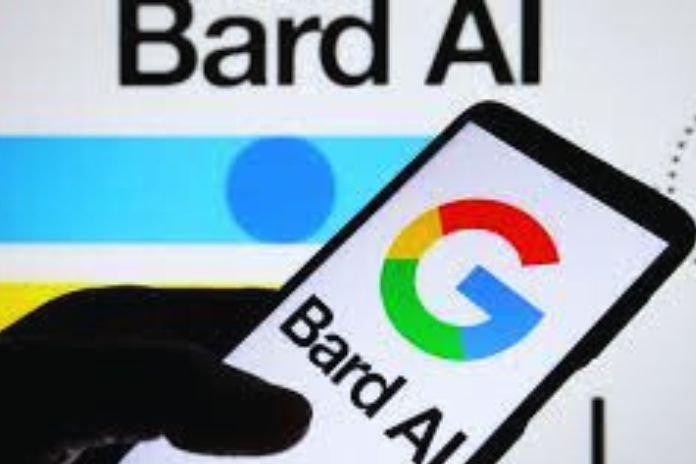Google Ads, 3 Hacks To Perform Thanks To Bard, Google AI
Google announced it during Google Marketing Live 2023; artificial intelligence will be at the heart of the debate this year. Suppose the web giant already uses it widely through automated Google Ads campaigns in the coming months. In that case, new tools will be available to truly put AI at the center of advertising creation.
Until then, you can rely on Bard, the Google conversational module, to help you perform in your Google Ads campaigns. The JVWEB team reveals to you, for this, 3 hacks to test without moderation – but carefully!
Hack #1: Optimize The Writing Of Your RSA Ads With Bard
As a Google Ads user, you are probably familiar with Responsive Search Ads RSAs. Broadcast on Search, these ads are automatically composed by the engine to offer the user the best-targeted version, the most likely to convert based on points of interest.
To do this, when creating RSA campaigns, Google Ads asks advertisers to provide the engine with up to 15 titles and 4 descriptions. This material is then available in thousands of combinations to broadcast the most effective RSA ads. Google Ads then relays for each ad a maximum of 3 titles and 2 descriptions.
If this variety in ad content is a real asset in terms of conversion, we must admit that sometimes inspiration could be a lot better! This is precisely where Bard comes in. A perfect ally, the conversational module will help you generate titles and descriptions to submit to Google Ads when creating your RSA campaigns. To obtain effective content, you will need to formulate a simple but complete prompt, indicating in particular:
- You want to generate an RSA ad for Google Ads
- Including the keyword “XX.”
- Focused on a “focus to be characterized” crowd
- With the target of “objective to be characterized.”
- The maximum size of the different components in the number of characters
Not only does Bard write a suggestion for your RSA Google Ads ads for you in just a few seconds, but it also provides some tips for improving campaign performance. You then have to repeat the operation as many times as desired. Ensure the topic is relevant before publishing; everything could be better…
Hack #2: Generate The Text For Your Gmail Sponsored Promotion Ads
Another advertising format offered by Google Ads, GSPs allow you to relay your ad directly to your target’s Gmail box. These advertisements, very useful in remarketing, can either return to the landing page when clicked or send a prospecting email directly to the recipient’s mailbox.
Google Ads is already integrating visual proposals within the campaign creation tool; let’s focus on creating the ad text. Here, too, you can offer different versions of content, more or less extended. You can then ask Bard to help you with the writing to increase the number of tests with your audiences. The principle is the same: create a prompt including:
- The expected format: the script of an email to prospects
- The target: in our example, family
- The argument for putting forward: here, the variety of the product catalog
Bard then offers a sales pitch formatted using the codes of a marketing email. The result may lack warmth to nourish the customer relationship and differentiation to retain their attention. However, this gives you a basis to fuel your sales arguments and vary the variations.
In any case, ask yourself what you think about the rendering quality before publishing… You can generate endlessly; don’t be shy! The more precise you are in your prompt, the more the output quality will meet your expectations. Keep in mind that Bard, like the others, is not going to invent anything. He will organize the occurrences until he composes the most linguistically effective rendering.
Hack #3: Amplify The Distribution Of Google Ads Display Campaigns
No need to introduce you to the Google Ads Display format; the principle is simple: broadcast your visual campaigns on the thematic sites most relevant to your audience. Again, natively, Google Ads helps you enrich the list of target sites. However, feeding or refreshing it regularly is still helpful to maintain your performance. Also, Bard can save you valuable time by offering quality broadcast locations. To do this, ask them to suggest target sites using a prompt including :
- The number of sites desired
- Usage: here, to distribute your Google Ads display ads
- The target theme: here, tennis
- The target: for us, family
- The type of product sold: always our tennis rackets
- Finally, ask him to justify his choice
It is ultimately this last point which provides real added value. Because if Bard gives you sites of interest to add to your mailing list, his justifications are all the more enjoyable. For example, it considers criteria such as domain authority, number of backlinks, quality and quantity of traffic. According to Bard, information comes from Google Search Console, Google Analytics, Moz, Majestic SEO, Ahrefs or SEMrush.
As you will have understood, this hack is also handy for developing your SEO, particularly by creating backlinks. All you need to do is specify that you are looking for external links for your Google Ads campaigns rather than Display distribution locations. In either case, do not hesitate to cross-check the veracity of the figures by cross-checking sources.
Here, you will also find some tips for choosing the sites with which to generate backlinks. Already endowed with natural qualities, Bard will likely make a growing place for himself in our lives and your campaigns! If you want to know more about the potential for optimizing your Google Ads using technological tools, contact us!
Read Also: How It Works, Where It Is Used, & Relationship Between RPA & AI
Share this content:











Post Comment